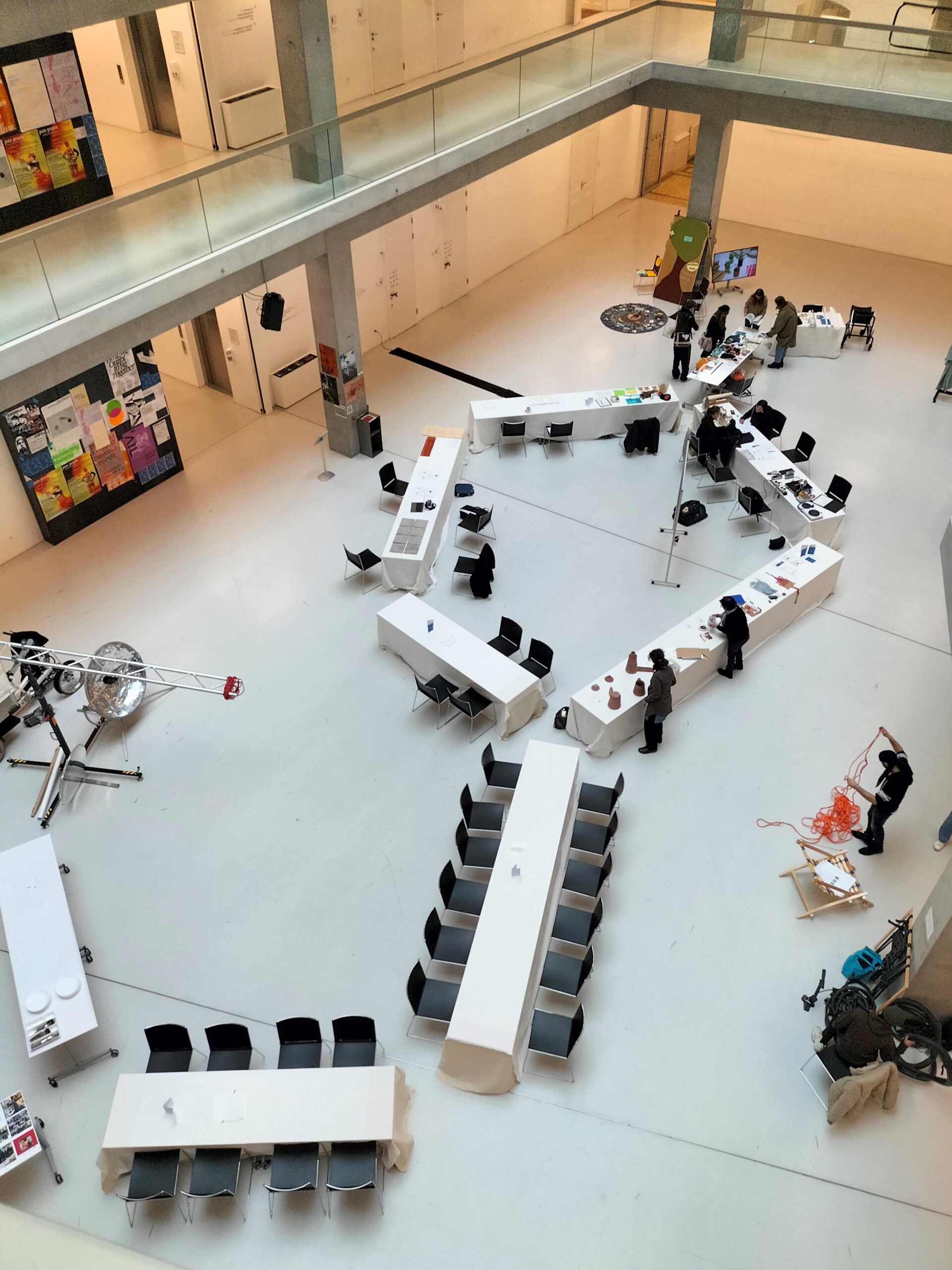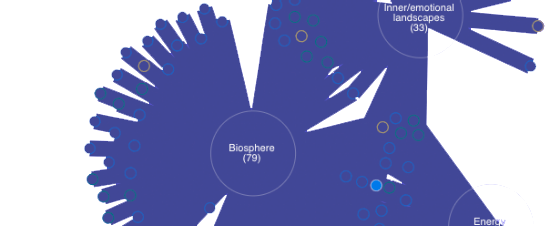
In the spirit of exploring responses to current global challenges we reach for new and positive collaborations, approaches and formats. eduLANDS for Transitions has been a further catalyst and has opened up new channels and stimuli. We have developed FLUX-Terrace alongside Raum für Nachhaltigkeit and succeeded in integrating these new creative spaces into eduLANDS for Transitions. This social constructivist learning has accelerated our connection with digital technology. We are excited and pleased to share something of the changes these developments have brought.
In the context of art and design projects at the Angewandte, Raum für Nachhaltigkeit is a fresh student-engaged inclusive forum for sustainable and socially-just innovation and sharing: friendly, responsive, forward-looking, evolving, innovative.
1. Original objectives of Raum für Nachhaltigkeit (design concept and design draft provided in 2019 by student) on course No. S03417
2. Objectives of the course No. S03417 – adapted in 2021 in response to objectives of Raum für Nachhaltigkeit, adapted further In 2022 in response to new collaboration with eduLANDS for Transitions
Participants take responsibility for themselves (adults only participate) Rules of the road to be observed at all times by all participants.
Preparation phase: discussion of research question and decision about nearby sustainable artistic projects
Activity phase: Introduction at meeting point, Bicycle Tour of proximity landscape with focus of specific bicycle tour outlined e.g. a visit to the bees,
Documentation phase: Critical Evaluation as an aspect of action research
(Using Bicycle Tour as example)
(Using Bicycle Tour as example) bicycles, helmets, map of the route.
How can artistic design education (collaborative RfN-Bicycle Tour) respond to changing humanitarian and environmental challenges?

